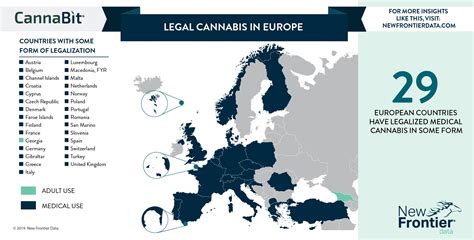Cannabis, recognized as the most commonly used illicit psychoactive substance worldwide, has seen a shift in legal status within many European Union countries. Recent years have marked a trend towards the decriminalization of cannabis use and personal possession, particularly for recreational purposes. This shift reflects an evolving perspective on cannabis and its implications in society.
The regulatory landscape of cannabis in the European Union is diverse and complex. In Germany, for instance, the Federal Institute for Drugs and Medical Devices has granted medicinal use of cannabis in special cases. This decision was bolstered by the Federal Administrative Court in 2005, enabling approximately 300 German patients with severe medical conditions to obtain cannabis products from pharmacies for pain relief.
Furthermore, public health monitoring in Europe, particularly concerning cannabis use, focuses on several key indicators. These include the prevalence of use, the prevalence of cannabis use disorder (CUD), treatment rates, and the potency of cannabis products. Data from the United Nations Office on Drugs and Crime, European Monitoring Centre for Drugs and Drug Addiction, and the Global Burden of Disease study provide valuable insights into these aspects.
In addition to medicinal use, the forensic concept of a “doping dose” and the broader implications of cannabis legalization are also under scrutiny. Belarus, for example, has limited cultivation of opium poppy and cannabis primarily for domestic markets. However, it serves as a transit point for illicit drugs to Russia, the Baltics, and Western Europe. The country’s anti-money-laundering legislation is noted to be below international standards, further complicating the regulatory scenario.
Internationally, perspectives on cannabis legalization continue to evolve, with many countries, including several in Europe, liberalizing their cannabis policies. This trend is not only limited to Europe but extends to the Western Hemisphere, with Uruguay and several states in the US legalizing cannabis production and sale for nonmedical purposes.
Lastly, the increasing potency and price of cannabis in Europe from 2006 to 2016 have been significant topics of study. The variation in cannabis potency and prices in newly legal markets is a subject of interest, highlighting the dynamic nature of the cannabis market in response to legal changes.

For more detailed information, readers can explore these topics through various sources:
Cannabis regulatory system in European Union countries
Illicit drugs – The World Factbook
International Perspectives on the Implications of Cannabis Legalization
Medicinal use of cannabis in Europe
Public health monitoring of cannabis use in Europe: prevalence of use
Polish Physicians’ Perspectives on Medical Cannabis Policy
A Regulatory Take on Cannabis and Cannabinoids for Medicinal use in the EU
Increasing potency and price of cannabis in Europe 2006–16
Variation in Cannabis Potency & Prices in a Newly-Legal Market
Medicinal Cannabis: History, Pharmacology, And Implications for the Cannabis Sector